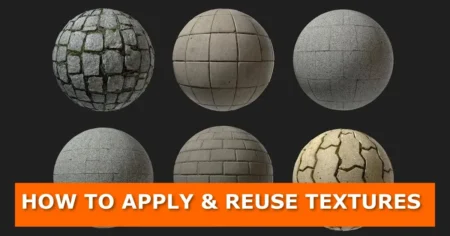Blender motion blur is an essential feature in Blender that brings realism and visual appeal to animations. Simulating the effect of motion, adds a sense of movement and authenticity to moving objects, creating a dynamic and engaging experience. Motion blur enhances visual quality, immersing viewers in the animation and making it more captivating and lifelike.
Blender’s default animation rendering produces still images, unsuitable for realistically depicting fast-moving objects. Blender offers motion blur rendering in both Cycles and EEVEE engines. Here’s how to add motion blur in Blender.
How to add Blender motion blur in Blender’s Cycles render engine

- Go to Render Properties > Motion Blur. Check the box to enable motion blur
- Adjust the following settings to your liking:
Position
Controls at what point the shutter opens in relation to the current frame.
Start on Frame: Shutter is starting to open at the current frame.
Center on Frame: Shutter is fully opened at the current frame.
End on Frame: Shutter is fully closed at the current frame.
Shutter

Time (in frames) between when the shutter starts to open and fully close. For example, shutter time 1.0 blurs over the length of 1 frame.
Rolling Shutter
Creates a Rolling Shutter effect.
None: No rolling shutter effect.
Top-Bottom: Renders rolling shutter from the top of the image to the bottom.
Rolling Shutter Duration
Controls balance between pure rolling shutter effect (if the value is zero) and pure motion blur effect (if the value is one).
Shutter Curve
Curve defining how the shutter opens and closes. The X axis is time, Y values of 0 mean fully closed shutter, Y values of 1 mean fully opened shutter. The default mapping is set to when shutter opens and closes instantly.
How to add Blender motion blur in EEVEE render engine

- Go to Render Properties > Motion Blur. Check the box to enable motion blur
- Adjust the following settings to your liking:
Position
Controls at what point the shutter opens in relation to the current frame.
Start on Frame: Shutter is starting to open at the current frame.
Center on Frame: Shutter is fully opened at the current frame.
End on Frame: Shutter is fully closed at the current frame.
Shutter
Time (in frames) between when the shutter starts to open and fully close. For example, shutter time 1.0 blurs over the length of 1 frame.
Background Separation
Used by the post-process blur to avoid blurring the background over the foreground. Lower values will reduce background bleeding onto foreground elements.
Max Blur
Maximum blur distance a pixel can spread over. A value of 0 will disable the post-process blur and only use the accumulation blur.
Note: High maximum blur values may also reduce the quality.
Eevee uses a fast post-process vector blur using a vector motion pass. This blurs the image between three-time steps using pixel velocity. This technique is fast and produces clean gradients, but issues can occur at object borders or if the motion is locally too complex; for example, if there are many vector variations in a small area.
Steps
This controls the number of steps used by the accumulation blur and thus its accuracy. More steps mean longer render time.
Note: When using multiple time steps, the render sample count is rounded up to the next multiple of steps to ensure an even distribution of samples across steps. Eevee splits the render into multiple time steps and accumulates the result which is known as Accumulation Motion Blur. This technique is precise but requires many steps for clean gradients. This is used in combination with the post-process blur to handle the inter-step gaps. Each step corresponds to a full scene re-evaluation and can add a lot of overhead to the render time. By adding more steps, you can also reduce the Max Blur options because the post-process blur has to cover a smaller distance.






